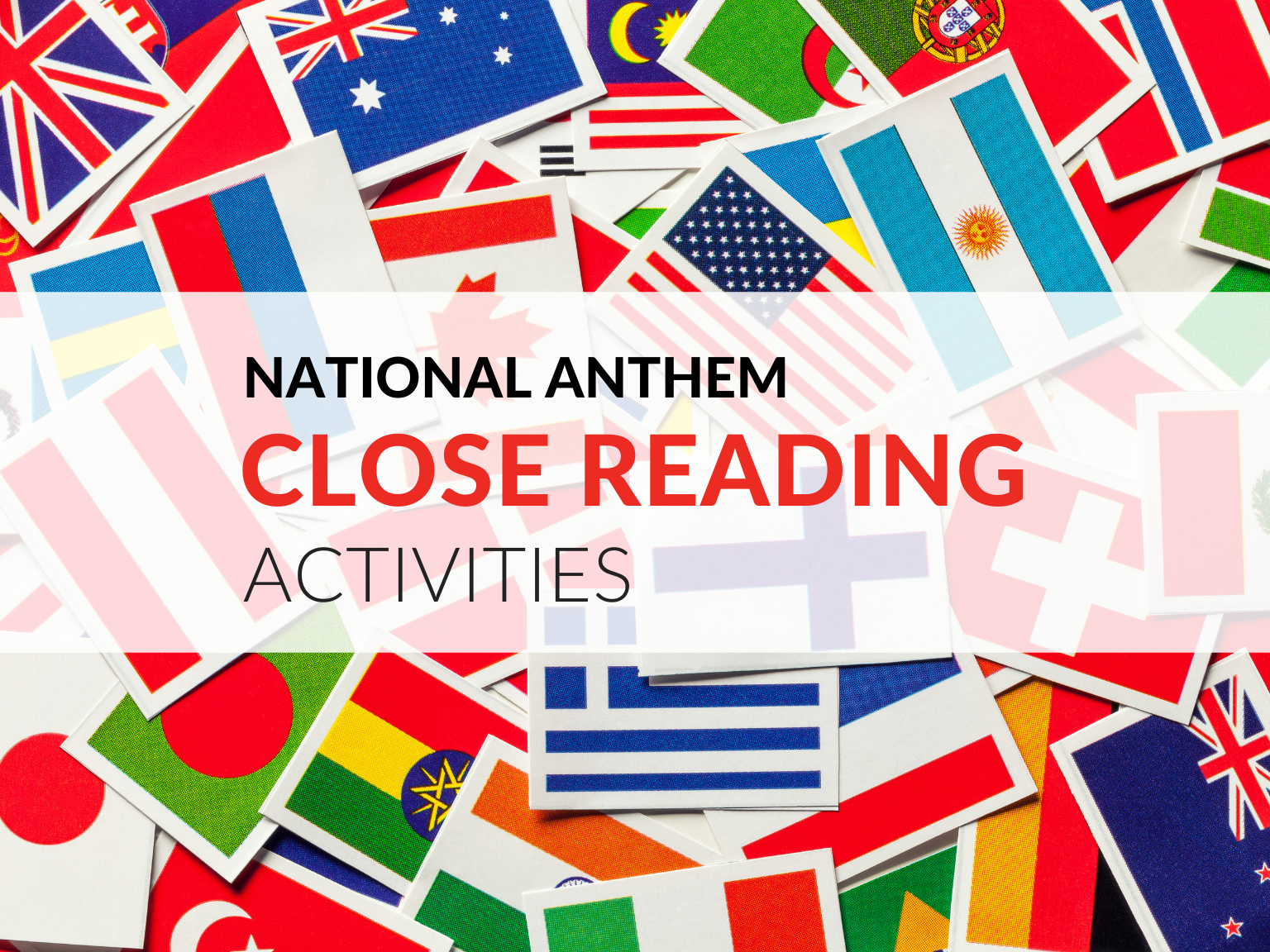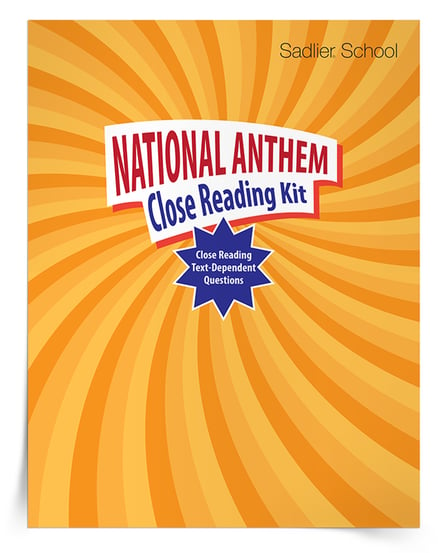June 17, 2024 ELA K-5, ELA 6-8, ELA Focus - Close Reading, ELA Resources - Activities, Core Literacy
National Anthem Close Reading Activities for Grades 3–8
By: Erin Lynch
In this article, you will learn how to use national anthems to engage students in a variety of close reading activities! Plus, download a free National Anthem Close Reading Kit that includes everything you need to execute these activities in your classroom.

What Is Close Reading?
Close reading is when a reader analyzes the details of a text to make interpretations and develop a deep understanding of the text. It is looking closely at how an author's ideas unfold through a text by examining the main idea, plot, vocabulary, syntax, story patterns and/or point of view through multiple re-readings of a piece of literature or informational text.
I've been following the close reading approach established by Diane Lapp, Barbara Moss, Maria Grant, and Kelly Johnson, who “literally” wrote the book on close reading (Turning the Page on Complex Texts: Differentiated Scaffolds for Close Reading Instruction). These literacy and close reading experts recommend students first engage in reading a complex text with a purpose and then answer text-dependent questions after each read for a deeper meaning of the text.
Close Reading Text-Dependent Questions
In a recent article, I explained how to incorporate purpose and text-dependent questions into close reading lesson planning. Just in case you missed it here is my overview:
Text-dependent questions should be thoughtfully prepared and written at an appropriate level of complexity to challenge the reader to understand the text in the most meaningful way possible.
After the first read, students gain a general understanding of what the text says. They should respond to broad text-dependent questions, such as, What is this text about?
After the second read, students deepen their understanding of how the text works. These questions have them analyze the language and the organizational structure used to convey information and describe experiences.
After the third read, students should synthesize the insights uncovered in earlier reading and make inferences about the author’s positioning, or what the text means.
National Anthem Close Reading Activities
Close reading of national anthems is a purposeful and meaningful way to build background knowledge and strengthen your students' ability to analyze a text. Download a National Anthem Close Reading Kit fill with activities that will have students analyze the lyrics of various national anthems by answering text-dependent questions. The close reading activities kit includes an instruction sheet for teachers, four close reading activity sheets, and a compare and contrast graphic organizer. The national anthems students will study are:
- National Anthem of Canada
- National Anthem of Italy
- National Anthem of China
- National Anthem of Sweden
Begin with Modeling Close Reading
Before you task students with the close reading activities included in my free kit, it is important to model close reading for students.
Closely reading the lyrics to The Star Spangled Banner by Francis Scott Key. Each time for a different purpose. After each read, answer the text-dependent questions to gain a deeper meaning of the text.
Oh, say can you see by the dawn's early light
What so proudly we hailed at the twilight's last gleaming?
Whose broad stripes and bright stars through the perilous fight,
O'er the ramparts we watched were so gallantly streaming?
And the rocket's red glare, the bombs bursting in air,
Gave proof through the night that our flag was still there.
Oh, say does that star-spangled banner yet wave
O'er the land of the free and the home of the brave?
PURPOSE FOR 1ST READ
Determine what the text is about.
Text-dependent questions for the 1st Read
-
What is the anthem about?
-
What are the key ideas or major points in this stanza?
PURPOSE FOR 2ND READ
Focus on the language used by the author and the structure of the text.
Text-dependent questions for the 2nd Read
- What is the author describing?
- What words or phrases are repeated?
- How does the repetition add to the text's meaning?
- What phrases or words pop out at you?
PURPOSE FOR 3RD READ
Look for meaning by making inferences.
Text-dependent questions for the 3rd Read
- What larger point or message do the writer's ideas add up to?
Part I: Introduce the National Anthems & Close Reading
Repeat this process using Italy, China, and Sweden worksheets.
- What did you think of the anthem?
- How did it make you feel?
Repeat this process using the Italy, China, and Sweden national anthem worksheets.
Part III: Compare and Contrast Activity
After closely reading and listening to each country's national anthem, have each student complete a National Anthem Compare and Contrast Activity using the graphic organizer provided in my printable kit. Students will answer the following questions:
- Which two anthems were most alike? (USA included) Explain.
- Which two anthems were the most different? (USA included) Explain.
- What were common phrases or words found in the anthems?
- What were common themes in the anthems?
Part IV: Research Extension Activity
Have students research one or more of the anthems. Using online and printed sources, students will answer the following questions:
- Who wrote the anthem?
- When was the anthem written?
- What was the inspiration?
- What was happening at that time in the country's history?
In Conclusion
Close reading of national anthems is a purposeful and meaningful way to build on background knowledge and strengthen your students' ability to analyze a text. Download my National Anthem Close Reading Kit to compare and contrast similarities and differences between anthems with your students this winter.




